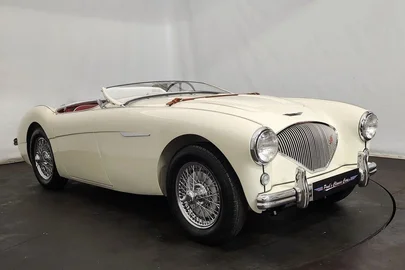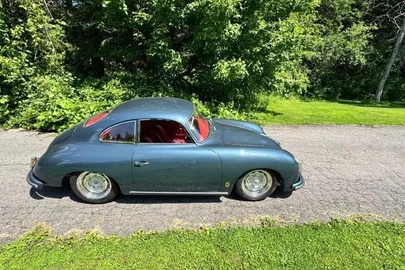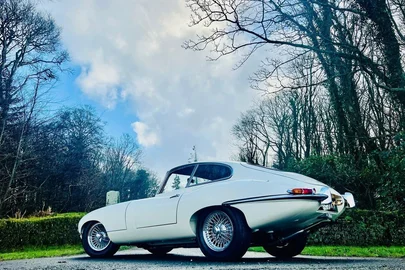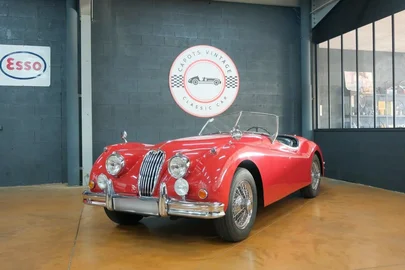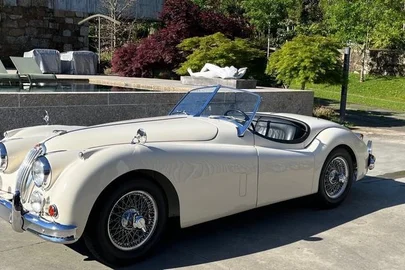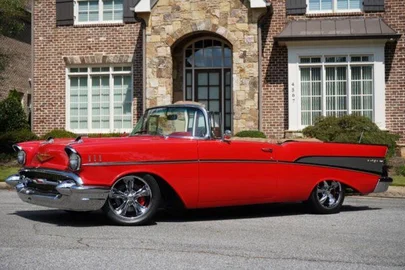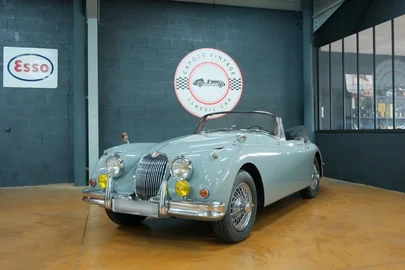

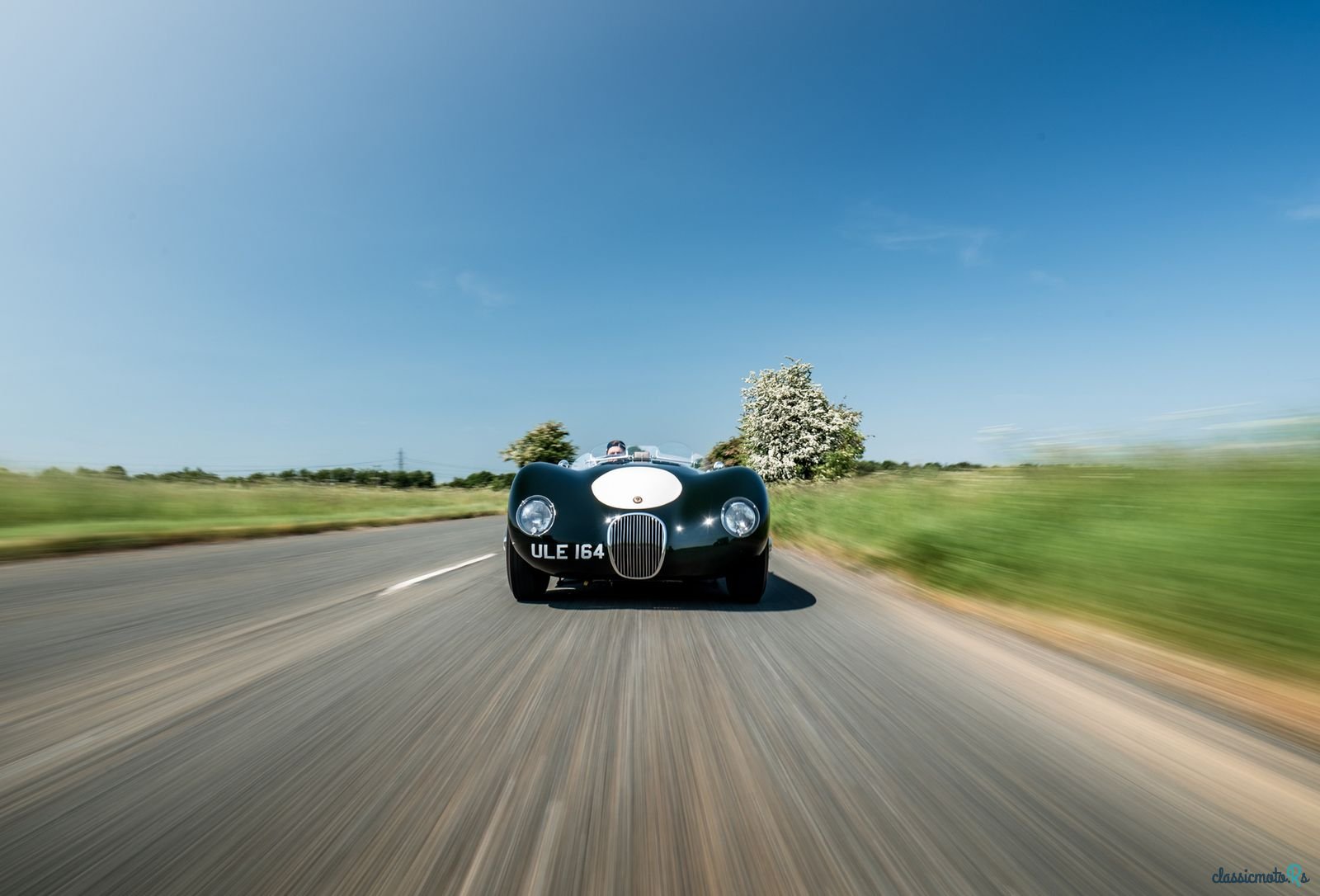
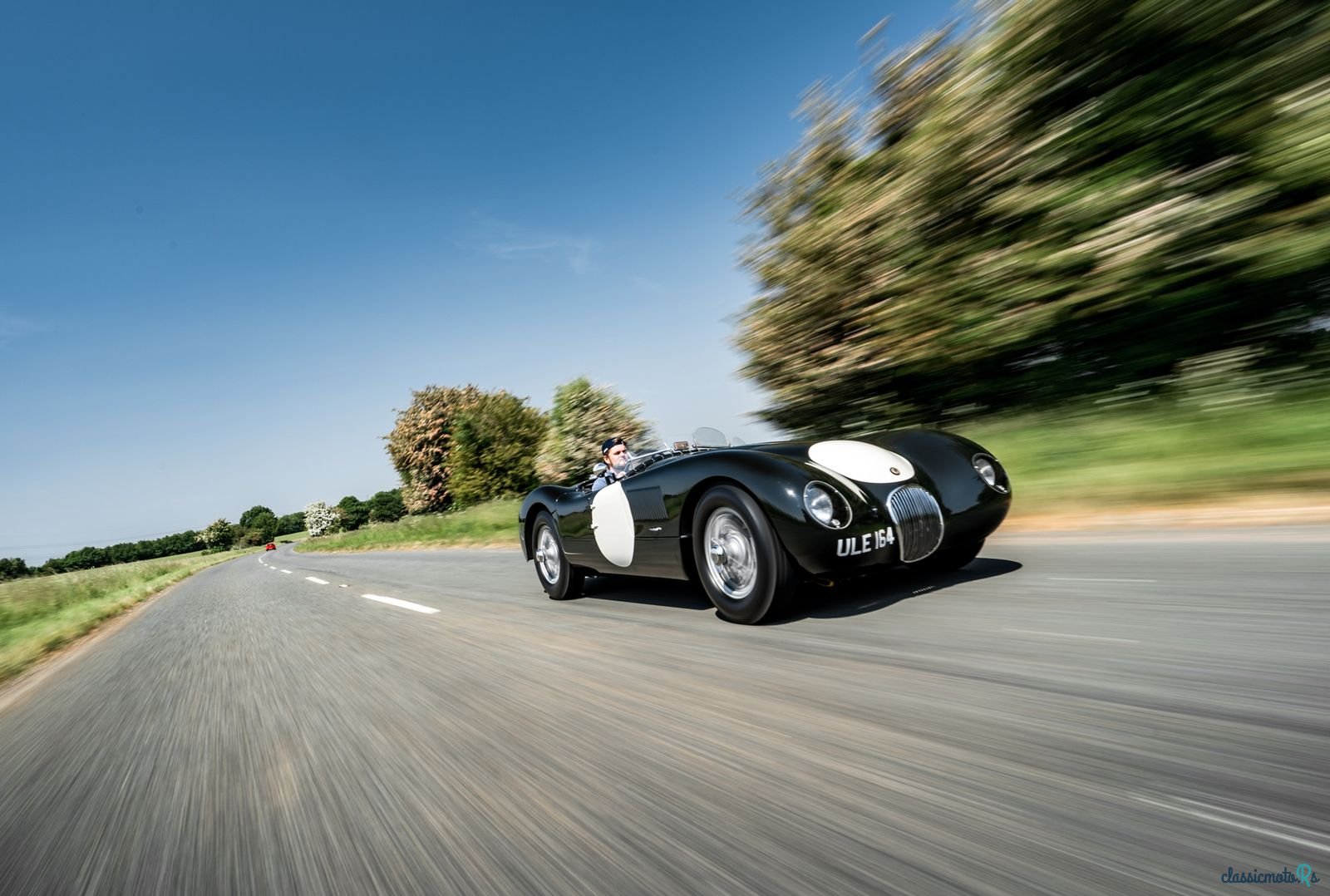

5 photos
1957' Jaguar C-Type Replica
Report This Ad!Rate This!Bookmark This
£130,000Published 15 June 2023ID: uFOJPP
Expired
2 years, 6 months ago
2 years, 6 months ago
Information from the owner
Age: 66 years
Exterior color: Green
Seller's comments about 1957' Jaguar C-Type Replica
Jaguar C-type aluminium replica
Built in 2009 by Coventry Classics in New Zealand
Faithful specification, with full aluminium body and Jaguar 3. 4-litre engine
Dashboard signed by Jaguar legend Norman Dewis
This Jaguar C-type was finished in early 2009 after a painstaking build by renowned replica builder Coventry Classics. Based in Taieri Airport in Dunedin, New Zealand, the company is run by Mark Paterson and Brian Dwyer, a traditionally trained coachbuilder and skilled alloy fabricator. Both men work in aircraft restoration and brought the same level of fastidious detail to this C-type.
Ordered in 2007, the Jaguar was built to extremely original ‘1952’ specification. The tubular steel chassis was constructed to the factory dimensions and features front suspension comprising double wishbones and torsion bars. The rear suspension employs trailing arms, torsion bar and Panhard Rod.
The 3. 4-litre engine is listed as number NA1795-7 – was rebuilt and runs on 2in sandcast carburettors, while the sump was modified to include internal baffles. The A-type cylinder head was upgraded to big-valve C spec, and a dyno sheet in the history files shows that it was giving almost 190bhp when tested.
Among the few non-standard touches are a Jaguar all-synchromesh gearbox with overdrive, while disc brakes – famously pioneered in period by the factory C-types – from an early XJ6 have been fitted. The rear axle is a modified MkVII unit with a Salisbury 4HA diff.
The bodywork was fabricated from 3003 aluminium and, as with the chassis, has been produced to the original dimensions. It has been finished in British Racing Green and is perfectly complemented by the painted wire wheels wearing Blockley tyres.
Since being completed and shipped to the UK for its first owner in spring 2009, the C-type has been used for various hillclimbs – it featured on the poster for the 2012 Bo’Ness meeting – and was taken to France for the Le Mans Classic in 2014.
Climb in over the wide sill section and you drop into an interior that perfectly evokes the original C-type. Ahead of you is a large, wood-rimmed steering wheel and the correct instrumentation – dominated by the big speed and rev counter. One sensible concession to modern conditions is the fitment of three-point inertia-reel seatbelts, and the dashboard has been signed by legendary Jaguar test-driver Norman Dewis.
The gearbox has a beautifully precise, mechanical feel, and with a crisp bark from the side-exit exhausts, driving this C-type conjures images of Le Mans or the Mille Miglia as you look down that curvaceous bonnet. Having been retained by its original owner ever since it was delivered to him, it is now being offered for sale for the first time and must be one of the most well-executed C-type replicas currently available.
MODEL HISTORY
After a largely standard XK 120 put up a good showing at the 1950 Le Mans 24 Hours, Jaguar entered the following year’s race with a new development of the breed. Referred to in company literature as the ‘Jaguar XK 120 “C” Type’, it featured a more powerful version of the existing 3. 4-litre straight-six engine fitted in a new tubular chassis designed by William Heynes.
This was all wrapped in an aerodynamic body that was completed by Malcolm Sayer, who would go on to shape the D-type and the E-type.
In 1951, the C-type cemented its place in history by winning Le Mans at its first attempt courtesy of Peter Walker and Peter Whitehead. Two years later, the latest development of the C-type – now with triple Weber carburettors in place of the twin SUs – won there again, this time with Tony Rolt and Duncan Hamilton at the wheel.
Another development for 1953 was the fitment of disc brakes. Jaguar had been developing the set-up on the XK 120 before test-driver Norman Dewis suggested they instead put it on the C-type. His reasoning was that, if it worked on the company’s fastest car, it would work on everything else.
Jaguar entered the 1952 Mille Miglia with a disc brake-equipped C-type in order to put it to the ultimate test. Stirling Moss was the driver, with Dewis alongside him, and they ran strongly before retiring. Not long afterwards, Moss won at Reims in the same car.
Jaguar built only 53 C-types for the use of the works team and for private owners, and thanks to its combination of competition success and good looks, it has become one of the most coveted sports-racing cars of the 1950s.
Built in 2009 by Coventry Classics in New Zealand
Faithful specification, with full aluminium body and Jaguar 3. 4-litre engine
Dashboard signed by Jaguar legend Norman Dewis
This Jaguar C-type was finished in early 2009 after a painstaking build by renowned replica builder Coventry Classics. Based in Taieri Airport in Dunedin, New Zealand, the company is run by Mark Paterson and Brian Dwyer, a traditionally trained coachbuilder and skilled alloy fabricator. Both men work in aircraft restoration and brought the same level of fastidious detail to this C-type.
Ordered in 2007, the Jaguar was built to extremely original ‘1952’ specification. The tubular steel chassis was constructed to the factory dimensions and features front suspension comprising double wishbones and torsion bars. The rear suspension employs trailing arms, torsion bar and Panhard Rod.
The 3. 4-litre engine is listed as number NA1795-7 – was rebuilt and runs on 2in sandcast carburettors, while the sump was modified to include internal baffles. The A-type cylinder head was upgraded to big-valve C spec, and a dyno sheet in the history files shows that it was giving almost 190bhp when tested.
Among the few non-standard touches are a Jaguar all-synchromesh gearbox with overdrive, while disc brakes – famously pioneered in period by the factory C-types – from an early XJ6 have been fitted. The rear axle is a modified MkVII unit with a Salisbury 4HA diff.
The bodywork was fabricated from 3003 aluminium and, as with the chassis, has been produced to the original dimensions. It has been finished in British Racing Green and is perfectly complemented by the painted wire wheels wearing Blockley tyres.
Since being completed and shipped to the UK for its first owner in spring 2009, the C-type has been used for various hillclimbs – it featured on the poster for the 2012 Bo’Ness meeting – and was taken to France for the Le Mans Classic in 2014.
Climb in over the wide sill section and you drop into an interior that perfectly evokes the original C-type. Ahead of you is a large, wood-rimmed steering wheel and the correct instrumentation – dominated by the big speed and rev counter. One sensible concession to modern conditions is the fitment of three-point inertia-reel seatbelts, and the dashboard has been signed by legendary Jaguar test-driver Norman Dewis.
The gearbox has a beautifully precise, mechanical feel, and with a crisp bark from the side-exit exhausts, driving this C-type conjures images of Le Mans or the Mille Miglia as you look down that curvaceous bonnet. Having been retained by its original owner ever since it was delivered to him, it is now being offered for sale for the first time and must be one of the most well-executed C-type replicas currently available.
MODEL HISTORY
After a largely standard XK 120 put up a good showing at the 1950 Le Mans 24 Hours, Jaguar entered the following year’s race with a new development of the breed. Referred to in company literature as the ‘Jaguar XK 120 “C” Type’, it featured a more powerful version of the existing 3. 4-litre straight-six engine fitted in a new tubular chassis designed by William Heynes.
This was all wrapped in an aerodynamic body that was completed by Malcolm Sayer, who would go on to shape the D-type and the E-type.
In 1951, the C-type cemented its place in history by winning Le Mans at its first attempt courtesy of Peter Walker and Peter Whitehead. Two years later, the latest development of the C-type – now with triple Weber carburettors in place of the twin SUs – won there again, this time with Tony Rolt and Duncan Hamilton at the wheel.
Another development for 1953 was the fitment of disc brakes. Jaguar had been developing the set-up on the XK 120 before test-driver Norman Dewis suggested they instead put it on the C-type. His reasoning was that, if it worked on the company’s fastest car, it would work on everything else.
Jaguar entered the 1952 Mille Miglia with a disc brake-equipped C-type in order to put it to the ultimate test. Stirling Moss was the driver, with Dewis alongside him, and they ran strongly before retiring. Not long afterwards, Moss won at Reims in the same car.
Jaguar built only 53 C-types for the use of the works team and for private owners, and thanks to its combination of competition success and good looks, it has become one of the most coveted sports-racing cars of the 1950s.
